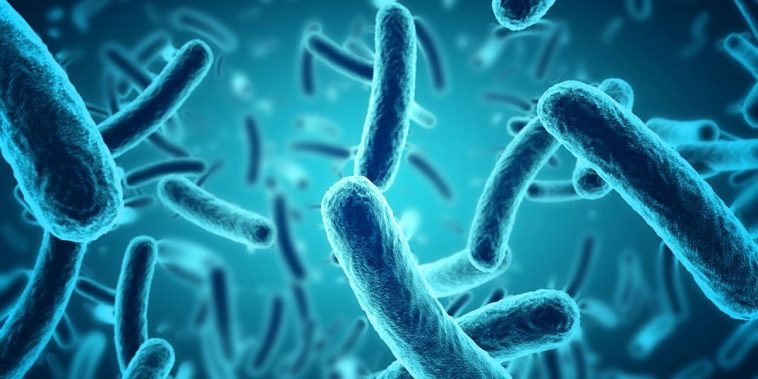Bacteria can break down pollutants and enhance soil fertility. In bioremediation research conducted by the Microbiology and Environmental Biotechnology Research Group of the Agricultural Research Council (ARC-Soil, Climate, and Water), bacteria and fungi possessing these abilities were isolated and identified.
There are also microorganisms that are able to associate with plant roots in a mutually beneficial manner.
We need all the help we can get to reclaim infertile agricultural land, because land is a limited natural resource. These tiny life forms can assist, but also need our protection to do their jobs.
Microorganisms are those life forms considered too small to be perceived by the naked eye, but can be seen through a microscope. One of their well-known characteristics is that they are found everywhere – in the air, soil and water, and within or on the surface of other living beings.
Amongst all microorganisms, bacteria are the most prominent. Some bacteria are considered to be good, others bad, and some in between. The good ones are known for various functions in human health, food processing, pharmaceuticals, and agricultural uses. The bad bacteria are those known to cause diseases and infections in humans, animals and plants.
It is now common knowledge that the harmless and beneficial bacteria far outweigh the detrimental ones.
Considering bacteria in soil, the beneficial bacteria are known for functions such as promoting plant growth, increasing soil fertility by mobilising nutrients and warding off plant diseases. This group of beneficial bacteria is referred to as plant growth promoting bacteria.
Furthermore, some beneficial bacteria are also known to aid mycorrhizal formation within plant roots; these are the mycorrhizal helper bacteria. Mycorrhizal associations are formed in many host plants by obligately or facultatively symbiotic fungi.

Rhizobium is a nitrogen-fixing soil bacteria. It lives in the root nodules of leguminous plants. It has a symbiotic relationship with the plant. It fixes nitrogen for the plants to absorb, in turn, consumes the food produced by the plant. Here, both the partners are benefited.
Obligate symbiotic fungi would only complete their life cycle and be functional while in a relationship with the host, whereas facultative symbiotic fungi would be functional with or without the host.
Mycorrhizal associations are important in various ecosystem functions, such as initial plant colonisation on land, forest establishment and maintenance, reclamation and rehabilitation of previously polluted land and are also used as bioinoculants to improve agricultural output.
Another group of beneficial bacteria in soil is the rhizobia, which are soil bacteria that are prominent in the biological nitrogen fixation process within nodules of some leguminous plants.
Performing these positive roles, the life of such beneficial microorganisms should be considered very special and therefore safeguarded.
Any form of encroachment or anomaly such as pollution, degradation and even tillage of the soil, directly and indirectly impacts negatively on soil bacteria. Soil pollution destroys a great number of harmless and beneficial bacteria, with serious repercussions on the functionality of the soil.

By their activity in the soil, earthworms offer many benefits: increased nutrient availability, better drainage, and a more stable soil structure, all of which help improve farm productivity.
Indirectly, the presence of certain pollutants (such as electronic waste) could trigger antibiotic resistance in soil bacteria, thus making them more virulent.
From the angle of sanctity of life, activities negatively impacting microbial lives are clear cases of violation of the life of soil bacteria and are obvious injustices to microorganisms in general. The right to life and protection of beneficial bacteria should be advocated in the same way it exists for other life forms.
Something must be done to protect bacteria from the adverse effects of soil
pollution.
Pollution puts our soils in danger, with the implied threat of them becoming incapable of meeting human needs. Soil is able to provide its various ecosystem services, because it is a living system comprising different microorganisms (bacteria, fungi, protozoans, and viruses), insects, earthworms, nematodes, and arthropods. Soil provides a habitat for all these organisms and is the basis of the terrestrial agro-ecosystem from which we derive feed, fibre, and fuel.
In fact, soil is the medium that human survival hinges on. As long as soils are at risk and the good soil bacteria are eliminated, sustainable agriculture, food security, and the provision of ecosystem functions will be compromised.
This article is published with acknowledgement to the Microbiology and Environmental Biotechnology Research Group of ARC-SCW.
The Microbiology and Environmental Biotechnology Research Group at ARC-SCW utilises both fundamental as well as applied microbiological and biotechnological approaches to address water, soil and climate problems. The research interests of the group range from biological removal of potential chemical stressors from the environment to bioenergy generation from organic waste.
For more information, visit the website at https://www.arc.agric.za/arc-iscw/Pages/Microbiology-and-Environmental-Biotechnology-Research-Group.aspx or contact Prof Rasheed Adeleke for more information or to discuss possible research projects and funding opportunities. Send an-email to AdelekeR@arc.agric.za or contact the landline on (+27)12-310-2519.
You can also read more on healthy bacteria in aquaponics systems here:
https://www.proagri.co.za/healthybacteria-in-aquaponics-systems-cansave-the-world/?lang=en








